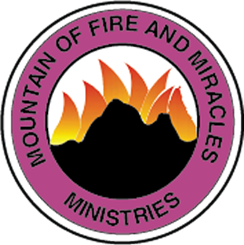MFM History in Jamaica
In the year 2006, a Sister came across one of our messages online and God revealed to her to invite the Ministry to Jamaica. She obeyed and wrote to the Ministry and invited us to come and start a branch in Jamaica.
Some Pastors were sent from England to assist in the crusade, creating awareness of MFM to the people, which led into the planting of the first MFM branch in Papine, Kingston in the year 2007.
Mountain of Fire and Miracles Ministries has its first branch in Jamaica in July 2007.
Three years after, in February 2010 the second branch was planted in Port-More which has now moved to Kingston.
In October 2014 the third branch was planted in May Pen.
MFM Montego Bay is the fourth branch in Jamaica and it was planted on May 2015.
The four branches of MFM in Jamaica are:
MFM St. Andrew
MFM Kingston
MFM May Pen
MFM Montego Bay
Interesting Facts About Montego Bay
Capital – Kingston
Population – 2,711,476
Area – 10,991 sq km (4,244 sq mi)
Official Language – English
Currency – Jamaican dollar (JMD)
Parish Name: St. James
Capital: Montego Bay
Land Area: 591.2 sq km (228.2 sq mi)
Population: 184,662

History
St. James was one of the second group of parishes formed in Jamaica and is said to have been named by Sir Thomas Modyford in about 1655, for the Duke of York (who later became James II and was the reigning monarch at the time). It was, however, much larger at the time as it included what are now the separate parishes of Trelawny and Hanover.
Remains of Jamaica’s original inhabitants, the Taino, have been located along the coastal area of St. James. These “early natives” are now affectionately referred to as the “Fairfield people”, in honour of a site near to Montego Bay where characteristic examples of their pottery have been found.
One of the main roadways used by the early settlers (from Oristan in Westmoreland to an area around the Martha Brae River), also passes through this parish and many legends have been handed down about supposed treasure left behind by the Spaniards.
After the English conquest of the island, St. James remained somewhat sparsely settled as the interior was inhabited by the Maroons (of whom the settlers were terrified) and the parish was some distance from Spanish Town – the then seat of Government.
Additionally, the parish capital of Montego Bay was witness to the final act of slave uprising in the island prior to emancipation. Known as the Christmas Rebellion of 1831-32, it began at Kensington Estate and engulfed the entire western section of Jamaica. Led by Baptist preacher and leader Samuel Sharpe this rebellion provoked two detailed Parliamentary Inquiries, which arguably contributed to the 1833 Abolition of Slavery across the British Empire.
Montego Bay
Jamaica’s official second city, its name has varying stories surrounding its origin. Christopher Columbus named the bay there, “El Cabo de Buen Tiempo”, or “Fairweather Gulf”, and it is said that the entire area was named for Montego de Salmanaca, an early colonizer. A more popular (and probable) idea however, is that the name “montego “was derived from the Spanish word “Manteca”, meaning lard or butter. An early map of Jamaica has the Montego Bay area listed as “Bahia de Manteca” or “Lard Bay”. This region was densely populated with wild hogs which the Spanish are said to have slaughtered in large numbers, in order to collect lard for export to Cartagena.
Other main towns include: Cambridge, Catadupa, Ipswitch, Anchovy and Montpelier.
